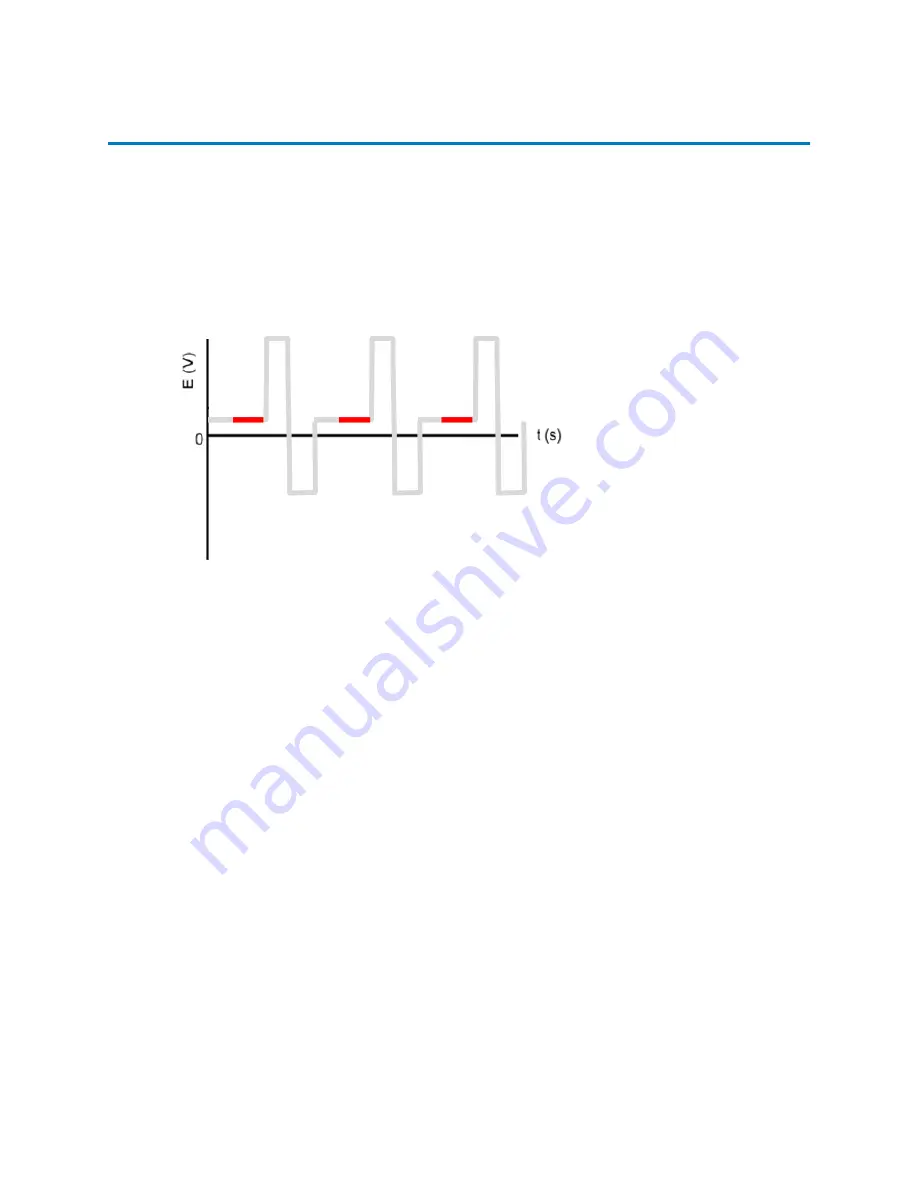
6.2 Pulse mode
The 3465 Detector can also be operated in Pulse mode. Pulse mode is different from DC mode.
Instead of a constant potential, a series of potential steps is applied in a cyclic manner. The
signal is sampled during a fraction of the total pulse cycle. During the sampling time (ts) the
signal is collected, and this value is sent to detector output. The frequency of data output is
determined by the pulse duration: t1 + t2 + t3 + t4 + t5. The duration is typically between 0.5 and
2 s (data rate between 2 and 0.5 Hz).
Figure 6–3: Pulse mode example
In the pulse mode example, plot of a three-step potential waveform (gray curve) versus time and
the time during which the current signal is measured (red part).
This mode is particularly useful for certain applications where the working electrode is rapidly
fouled due to adsorption of reactant or reaction products or/and when using metal electrodes like
gold, platinum, or titanium. Metal electrodes are the electrodes of choice for oxidation/reduction
of aliphatic compounds with functional groups. Such compounds are hard to oxidize on inert
electrode materials. Due to surface adsorption of the target compound on metal electrodes, the
activation energy barrier for the reaction is lowered, allowing oxidation/reduction at much lower
potential. Due to the fact that either the reactant remains at the WE surface or a metal oxide layer
is formed, the electrode is deactivated and needs a pulsed potential to continuously clean and
regenerate a metal surface for the reaction.
December 16, 2021, 715007395 Ver. 00
Page 60
















































